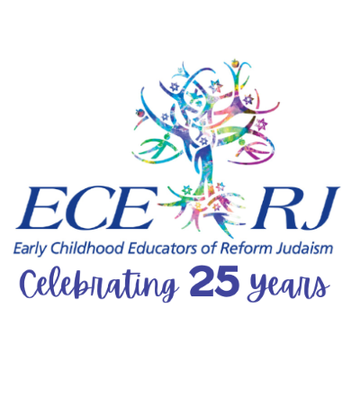Activity
-
Andy Brenits posted an articleOne of my favorite "good morning" songs I like to sing with our preschool classes is "When I Woke Up see more
By Shawn Fogel
One of my favorite "good morning" songs I like to sing with our preschool classes is "When I Woke Up Today", by Laurie Berkner (from her 2016 "Superhero" album). What I love about this song is how adaptable it is. If you listen to the original version, you'll hear the variety of actions Laurie uses (sing together, shake together, tip-toe together, jump, and twist together). Depending on the age of the class and how active they are, I can make the actions simpler (clap together, pat our legs together), incorporate instruments (shake our shakers together), or even get a little silly (sing like cats together, meow meow meow). If the kids are really engaged, I can keep the song going as long as I want, or I can make it short and sweet for the "deer in headlights" classes (like the youngest 2's at the beginning of the year).
My favorite finger-play song is "One Little Finger". I'm not sure who the original writer is, but the most commonly used version is attributed to Super Simple Songs or Noodle & Pals. You don't need to play an instrument or even have much of a sense of pitch to make this one fun. The repetition makes it easy for the kids to join in, and, just like "When I Woke Up Today", it is very adaptable. The Super Simple Songs version uses six body parts (head, nose, chin, arm, leg, foot), but you can do fewer or more depending on the age and attention span of the class. You can always add more parts like elbow, wrist, knee, and ankle. Some classes like the challenge of going really fast. If you really want to challenge an older class, you can make it like a game of Simon Says and see if you can trick them by pointing to a body part that is different from the one you sang (sing "put it on your elbow" but instead point to your knee). Another way to expand the song is to increase the number all the way up to "Five Little Fingers". There are lots of options that will allow you to sing this song every day and make it a little different each time.
In our school, we gather all of the classes together first thing on Friday mornings for "Bima Time", which consists of a few Shabbat songs and a story. This year we sent this Dropbox link to all of our new families with recordings and lyrics for the Bima Time songs.
If you sing "Shabbat Is Here", you might use the lyrics "it's Friday night, the candles burning bright". This is the way it was written, and the way that I used to sing it, until a few years ago. One day a student stopped me in the middle of the song and said "but, it's NOT Friday night, it's Friday morning!". I could have explained that yes, it is not yet Friday night, but that technically Shabbat doesn't begin until the sun goes down, and therefore when we "do Shabbat" at school we're really just practicing because it isn't really Shabbat yet. Instead, I said "you're right, let's change the words to the song!" We ended up with "it's Friday, hip hip hooray", and let's face it, now the song is even more fun.
YouTube link for "When I Woke Up Today":
https://youtu.be/mLOkR_IP1w0?si=hw36vKKU7RYyGWjw
YouTube link for "One Little Finger".
https://youtu.be/eBVqcTEC3zQ?si=ScE8S-A_xnfjK-UZ
Dropbox link for "Bima Time" Shabbat songs and blessings:
-
Andy Brenits posted an articleAs we were busily and excitedly preparing our classrooms to welcome children in September, we had th see more
As we were busily and excitedly preparing our classrooms to welcome children in September, we had the incredible opportunity to participate in a workshop led by Jonathan Shmidt Chapman, who, in partnership with our federation and Elevated, came to Boston to work with our educators. After such positive feedback from our teachers, we are delighted to learn from and with Jonathan at Yom Chadash in January.
Here are some of the reflections from our educators.
Jonathan does a great job of engaging his audience and sharing his knowledge in a fun and entertaining way! I enjoyed actually doing the crafts and activities that the kids would be doing in our classroom. I found Jonathon’s use of imaginative play to be the most impactful. I like the idea that kids can use simple objects to imagine or create different scenarios. For example, we have implemented the use of simple sensory bins for the Jonah and the Whale story. We use sand and ocean animals and allow the kids to play and imagine on their own. Overall, I enjoyed the simplicity of his crafts, because it leads to more use of the child’s imagination.
We have been putting out various items and activities related to the high holidays with a very open-ended concept, and we have enjoyed seeing how our classes have put them all together (or in some cases, not together at all).
When I attended the professional development with Jonathan Chapman, I was really inspired by the way he taught us how to share stories from the Torah. I appreciated how he used props to tell the stories and demonstrated how the kids could participate in storytelling. The session was very interactive and fun. We brought this back to our classroom and the children have enjoyed acting out stories from the Torah.
He made me see theater for young children from a different perspective. I was inspired by the words he was using and the examples of how we can modify the play for all different ages. For the younger children, you don’t have to use fancy or unfamiliar language, but rather gestures, movements, and acting. It was very encouraging to participate in. I loved it!
I found the session thought provoking.
The thing that jumped out at me the most is how much information he was able to give us on the holiday while acting and moving around. As a teacher to young students, I’m always looking for new ways to give information to different types of learners. Jonathan was able to show me new aspects of the holiday that I had not experienced in my almost 20 years of being a Jewish early educator. Not to mention, we had a great time doing it.
I felt like a kid. For the first time in my life, I felt like a person my age can play. I liked the way he was dancing and explained things to us. That training was very good.
Reflections compiled from teachers at Temple Beth Avodah in Newton, MA and Temple Shir Tikva in Wayland, MA.
-
Andy Brenits posted an articleBring the joy of Purim to your early childhood classroom with engaging activities that celebrate the see more
Purim is a joyful Jewish holiday that celebrates the story of Queen Esther, who saved the Jewish people with the help of her uncle, Mordechai, from the evil Haman and the Persian King Ahashverosh. This festive holiday is a time to celebrate the survival of the Jewish community. Here are some fun and engaging ways to bring Purim into your early childhood classroom:
1. The Purim Story (For Kids) by PJ Library
Listening to the story of Esther is a great starting point to discuss the holiday with children. Consider asking them questions like:- How did Esther become the Queen?
- Why didn’t Haman like the Jewish people?
- What do you think made Esther brave enough to stand up to the King and Haman?
- How do you think Esther felt after convincing the King to take action against Haman?
2. Create Mishloach Manot (Purim Goodie Bags)
In the Book of Esther, we are encouraged to give gifts to others, especially those in need. A fun way to celebrate this tradition is by creating Mishloach Manot, or Purim goodie bags. These can be filled with treats like fruit, candy, Hamantaschen, and small toys or games to share with classmates and others in the community.3. Bake Hamantaschen Together
A classic Purim food is Hamantaschen, a triangular pastry filled with sweet fillings. Some fun variations include:Discuss why these cookies are a Purim tradition and enjoy baking them as a class!
4. Dress Up and Celebrate with a Purim Costume Party
In the Purim story, Queen Esther initially kept her Jewish identity a secret. Dressing up in costumes is a fun way to connect with the story and celebrate together. It also encourages a sense of unity and inclusion, as everyone can dress up and feel part of the celebration. Ask the children what costumes they'd like to wear, then host a Purim costume party. Don’t forget to check out this Spotify list of Purim Songs for Kids to get everyone in the spirit!5. Make Graggers and Retell the Story
Graggers (noisemakers) are traditionally used to drown out Haman’s name during the Purim story. Create some simple graggers with the children:Once they’re made, use the graggers to retell the story of Esther in a fun and interactive way!
6. Add Purim Puppets to the Drama Area
Children love to act out stories, so creating Purim puppets is a fantastic way to bring the story of Esther to life. Work with the children to make puppets, which they can then use in the classroom’s theater or drama area. This provides a creative outlet for them to express their understanding of the story in their own way.These activities are great ways to celebrate Purim and introduce young children to the holiday’s traditions, characters, and messages.
Tricia Ginis, Executive Director, ECE-RJ


